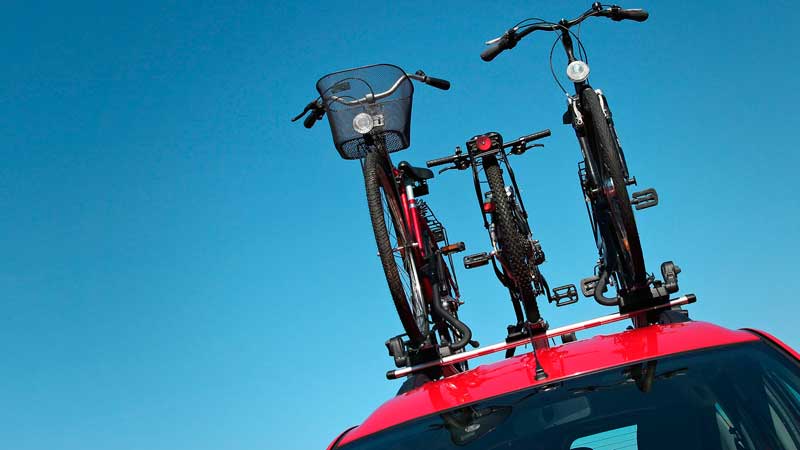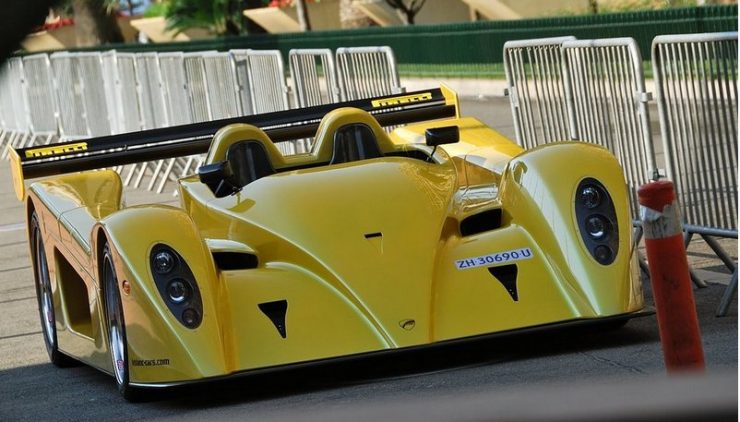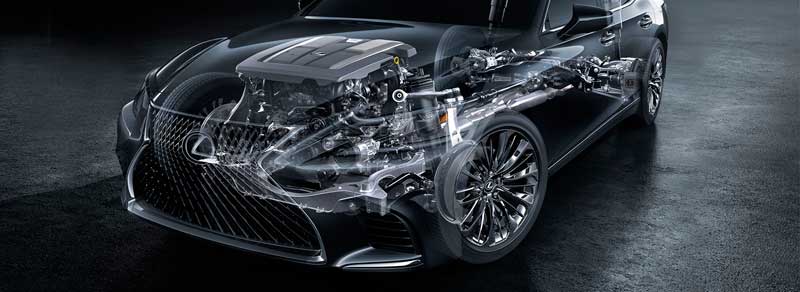 Owning a car is not a cheap pleasure, no matter what they say.
Owning a car is not a cheap pleasure, no matter what they say.
Do the math; each car requires fuel refueling, repair, which happens even with new cars, regular maintenance, plus spending on all sorts of documents (insurance, etc.).
However, the car is still a profitable and useful means of transportation. Let’s then consider how you can reduce the cost of repairs and various technical services, carrying out proper maintenance.
So, the good condition of machine parts and the car as a whole largely depends on how actively you will care for the car.
If you start to monitor the condition of your car closely, then, in the long run, you can save a lot of effort and money. Besides saving on repairs, the driver gets a more durable and reliable car. If you decide to sell your vehicle, the proceeds from its sale will be considerably higher.
Our guide provides 51 simple car care and maintenance tips to help any driver reduce unnecessary car expenses.
1. Appearance
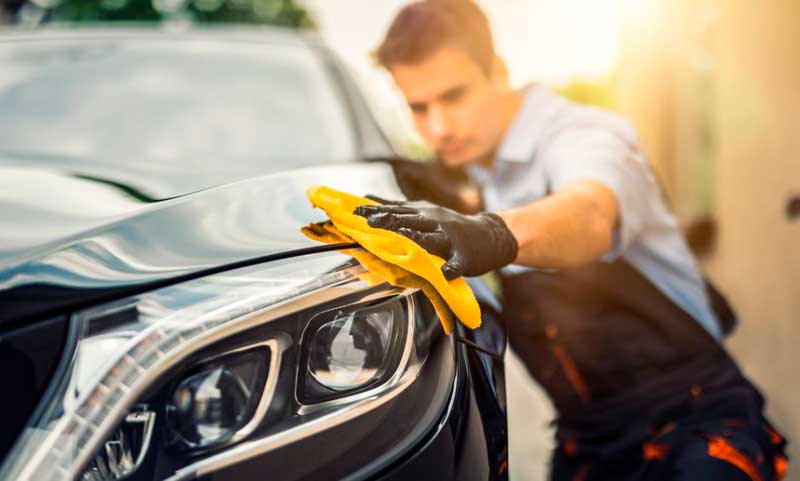 Let’s start with the external aspects.
Let’s start with the external aspects.
The most common mistake of drivers is indifference to the dirt that sticks and remains on the body or rear window of the car.
You will not believe it, but the dirt tends to penetrate the top layer of paint on the body, which means that this stain will eventually be impossible to deduce, and now imagine how many such spots can form on your car.
That is why to preserve the appearance of your car in the proper form for as long as possible and to protect the car body from the influence of the environment, regular washing and application of protective wax on the body will help.
However, in this case, it is necessary to find a middle ground.
Many experts agree that washing the car too often or rarely is equally harmful. Our vision – at least once a month, but no more than once every couple of weeks.
The fact is that modern components of “active foam” are quite aggressive, and even the slightest damage to the paint coating can provoke its further destruction. Chrome plating and painted plastic parts suffer even faster.
2. Body cleaning
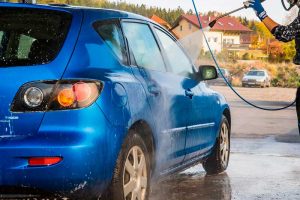 The ideal solution for washing the body is to appeal to professionals – car wash. In this case, the paint and trim details of the car are least affected.
The ideal solution for washing the body is to appeal to professionals – car wash. In this case, the paint and trim details of the car are least affected.
However, if you decide to save, you can handle this issue by yourself.
The safest thing for the car is a DIY manual wash with the use of good old auto shampoo, foam sponge, and water. The sponge is better to choose as soft as possible so that it does not scratch the body.
The water temperature at the self-washing should be as close as possible to the body temperature: if the car heated on the sun, it is better to warm up the water a little, but not more than 60°C (140.0°F). Too hot water is detrimental to the paintwork.
If you choose a self-service car wash, remember that you need to use a high-pressure washer carefully, so as not to leave micro damages from the sand on the body. You need to wash the car from top to bottom.
Before washing the car body, be sure to open the hood and remove dirt, dust, and remnants of dry leaves from under the windshield, which usually falls there. Quite possibly that the leaves clogged the central air duct, which supplies air to the cabin.
Next, take a high-pressure hose and at a distance of about 30 centimeters, turn on the water. Under the pressure of the water, you must remove salt and dirt from the car body.
Wash off the sand, salt, the reagent is necessary before you apply the shampoo to the body with a sponge. Otherwise, all sand, dirt, etc. may damage the paintwork of the body.
Once you have pressure washed all the dirt from the body, you will need two buckets of warm water, auto shampoo, and sponge. In one bucket, you have to dilute the shampoo. In the other, you will rinse the sponge.
Apply shampoo to the body with a sponge. Try to wipe off the hard-to-remove dirt with a sponge immediately. Especially pay attention to the driver’s door, which is more often contaminated during operation of the car.
Finally, wash the car under the pressure of the water and dry it with a chamois or microfiber cloth. You can also use a waffle towel, which absorbs water perfectly.
3. Wheel cleaning
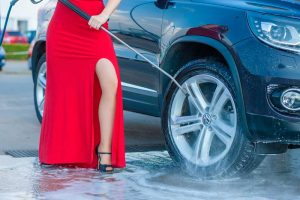 Initially, you will need to wash all dirt, sand, reagent, and salt from the wheels and arches with a high-pressure hose. Just as you did when cleaning the body, keep the water sprayer at a distance of about 30 centimeters.
Initially, you will need to wash all dirt, sand, reagent, and salt from the wheels and arches with a high-pressure hose. Just as you did when cleaning the body, keep the water sprayer at a distance of about 30 centimeters.
Next, the remaining dirt you have to wash off the wheels with shampoo and sponge.
To remove stubborn stains, such as residue from the brake pads (burnt dust from the brake pads), you will need a special cleaner for the wheels, which is sold in any car shop.
When applying such cleaner to the wheels, keep it always upwards so that the spray is directed upwards. Thus, you will evenly apply the cleaner to the entire wheel disc and avoid stains on the rim.
Also, when cleaning discs, you may encounter hard-to-reach areas where there is contamination. To remove dirt from such places, take a small brush (even a toothbrush may be suitable) and remove dirt with it, where you can not do it with a sponge.
After cleaning the wheels, rinse all with water. Also, after washing, we advise you to inspect the wheels for damage to the tires and wheels after use.
4. Rubber bands and plastic strips cleaning
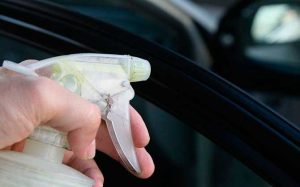 Plastic moldings on the body, as well as rubber seals, become very dirty over time. Also, rubber seals become brittle over time.
Plastic moldings on the body, as well as rubber seals, become very dirty over time. Also, rubber seals become brittle over time.
To clean the rubber seals and bring them to a healthy appearance, you should wipe them with a damp cloth, and then, after drying, apply vaseline to them. Thus, you will return the former elasticity of the elastic bands. By lubricating the rubber seals with vaseline, you will also protect them from temperature changes. This will improve the sound insulation and the sealing of the cabin.
To clean the plastic panels, moldings, and inserts on the body, use a special cleaning agent for painted plastic panels.
Rubber doors and window openings seals remain more elastic if they are regularly treated with rubber care products. It also prevents the accelerated wear of seals and loss of their tightness.
5. After washing body care
High-quality care of the car is in mandatory processing by auto cosmetics containing special waxes on a synthetic basis.
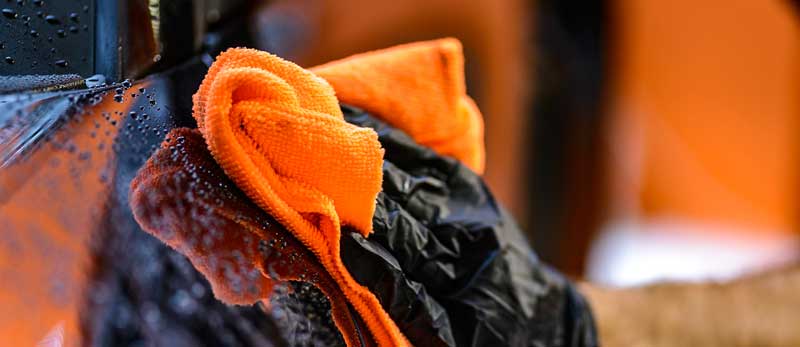
Thanks to such means, the paint and varnish covering is protected. Treatment is recommended to be carried out immediately after washing. The body must be wet.
6. Windows and headlights washing
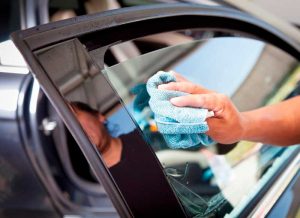 It is necessary to monitor the cleanliness of the headlights and all windows constantly.
It is necessary to monitor the cleanliness of the headlights and all windows constantly.
Ordinary wet wipes will not work, they will dim the headlights over time, and the stains will remain on the glass. Use water and special shampoos. Use only appropriate cleaning products for this task.
In auto shops sold a lot of chemicals for cleaning car windows. As a rule, it is enough to clean the car windows thoroughly.
It will also require a microfiber cloth with the help of which and the cleaner you will make your glass as transparent as possible and perfectly clean.
To quickly clean the glass, it is necessary to apply the cleaner to the glass and with a microfiber cloth, first, go over vertically and then horizontally. Next, you will clearly see the places (stripes-stains) that need to be removed to achieve maximum purity and transparency.
When cleaning the side windows, before starting, lower them slightly to clean the top edge. Next, lift the glass and clean the rest of the glass surface.
7. Polishing
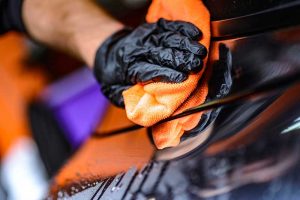 Automotive beauty, as well as pristine shine, is an indicator of the care of the motorist about his vehicle.
Automotive beauty, as well as pristine shine, is an indicator of the care of the motorist about his vehicle.
For the car to shine, you can choose an arsenal of tools, as well as professional polish: wax, Teflon, restorative, abrasive, two – and three-component.
The entire range of polishing products is classified into protective, restoring.
To properly care for the car, carry out protective polishing two times a year in the off-season summer-winter. Abrasive materials are not used in the processing, and the polishing material is absorbed with the paint coating already applied to the surface of the machine, creating an additional layer of protection.
To give the car a little extra protection and prevent potential rust, cover the auto every six months with a fresh layer of wax after washing it.
- First, wash the car with car soap and rinse thoroughly. Let it dry or wipe with towels.
- Apply the wax to the paintwork of the vehicle using the attached applicator, working in a circular motion. Wait for the wax to dry.
- Polish the wax with clean suede cloth.
It is necessary to apply car polish to preserve the shine of the painted surfaces. It has properties to fill in microcracks and to create the film protecting the car from the influence of moisture and the sun.
8. Engine cleaning
Undoubtedly, the engine deserves attention and care, because it is the heart of your car, which is subjected to enormous loads every day. A dirty engine is more prone to overheating, which reduces the viscosity of the oil and accelerates the wear of engine parts.
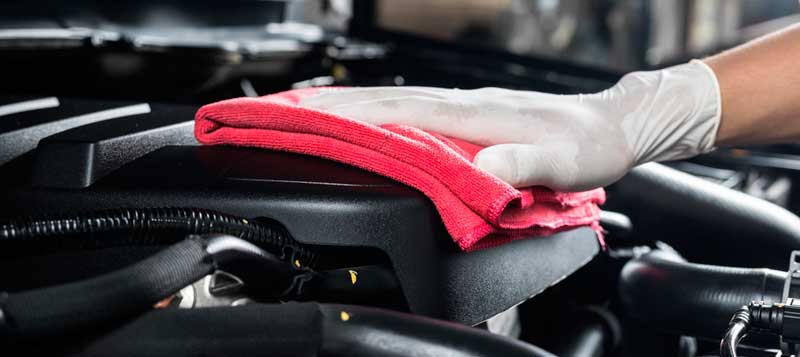
Naturally, any working engine gradually accumulates dirt, oil residues, and other waste products. To effectively but safely deal with all this, you will need:
- product for cleaning engine from oil;
- microfiber cleaning cloths or wipes;
- medium hardness brush;
- tight plastic bags.
Do not start if you have just driven the car into the garage – the engine should not be hot.
No matter what product you use, it will take some time to dissolve the plaque. It is unlikely that you want to apply cleaning fluid to the surface and watch it boil, evaporating even before you took the rag. Therefore, it is better not to hurry, arrange a half-hour break.
The next step is the primary external cleaning of engine parts from debris with a brush. You might be surprised at what might be lying under the hood.
Next, wrap the delicate parts in bags and tie tightly to avoid water ingress. Even though at home you are unlikely to get a high-pressure wash, as is usually done at car services, you should still protect fragile components, such as the air duct, battery, starter, generator, any open electrical components, and bare wires.
Now that the car engine is prepared, it’s time to take the engine cleaner and apply it according to the instructions on the surface (usually spraying).
Leave for the allotted time to cleaning agents dealt with contamination. Now take the brush, gently and thoroughly clean each section with it. After that, wash off all the remnants of dirt and industrial cleaner with water and wipe dry with a cloth.
Leave the hood open until the moisture dries. Then remove the protective bags.
9. Technical condition
Every time before departure, it is necessary to check the technical condition of the car.
Check coolant, brake fluid, and oil levels. The latter with a certain periodicity should not just be added, but also completely changed. This will take a minimum of time, but will save you from buying new filters, and sometimes some technical components of the car.
10. Engine
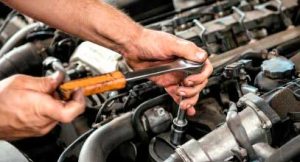 In the second place, after the body is the engine. The engine is reliable and usually does not require special care; it is only necessary to follow a few rules:
In the second place, after the body is the engine. The engine is reliable and usually does not require special care; it is only necessary to follow a few rules:
- At routine maintenance, fill in engine oil with the parameters recommended by the manufacturer, do not save on oil and the oil filter, expenses for them in comparison with the repair of the engine are scanty.
- Do not start driving immediately after starting the engine; let the oil fill all the highways and channels. Try not to load the cold engine (fast acceleration, forcing snowdrifts at the limit of torque).
- Timely change the air filter, with intensive use of the car it is better to do it twice a year, before the beginning of the summer and winter season.
Not always, even an experienced driver can identify hidden defects and emerging “diseases” of engine systems.
These problems are detected only with the use of special diagnostic tools located at technical inspection stations. Inspection is better to pass once in 1-2 months and at the proven specialists who will not look for nonexistent problems.
11. Steering
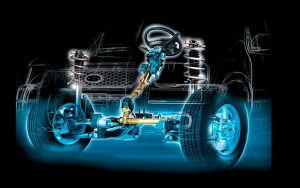 You need to place the car on an overpass to diagnose the steering.
You need to place the car on an overpass to diagnose the steering.
The inspection of all parts and assemblies for backlash is conducted.
The axial movement of the rod tips relative to the axis of the pin is checked. If it exceeds 1.5 mm, the tip must be replaced.
Another reason for buying a new node is tapping and other symptoms of backlash.
- The tightening of the adjustment clamps couplings of the side rods is controlled.
- The pendulum lever sways, at displacements, the nut is tightened, or the sleeve changes.
- Rubber covers are examined. Any damage or presence of oil indicates the need for immediate replacement.
- If oil leakage is detected, the upper cover of the steering crankcase is tightened, the oil seals are changed.
Part of the work is carried out from the cabin:
- If the steering wheel is moving axially, the threaded mounting of the steering shaft must be checked.
- The free stroke of the steering wheel should not exceed 5 degrees. At more significant value, it is necessary to look for zones of the increased gaps between nodes.
Most often, the increased free travel is caused by the axial movement of the worm in the bearing due to the wear of the treadmills (if at the time of rotation of the steering wheel to take up the shaft, you can feel the movement).
Read also: Timken vs MOOG vs SKF
Backlash is also possible in the engagement of the worm-roller; it is accompanied by pushes and knocks of the bipod.
The above-described diagnostic work is the minimum. Almost every motorist will be able to perform these tasks by himself.
More serious and complete diagnosis and repair of steering are possible only in service centers equipped with modern equipment.
12. Fuel system
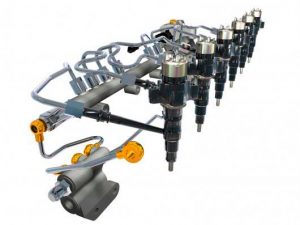 Within a month, there is a separation of gasoline, and after a year or two, it evaporates and turns into a mass similar to caramel, which covers the fuel tank from the inside.
Within a month, there is a separation of gasoline, and after a year or two, it evaporates and turns into a mass similar to caramel, which covers the fuel tank from the inside.
Take the tank or drive the car to the workshop, where experts will study its internal condition with the help of a special flexible camera.
If the entire interior is spoiled with sticky mass, the tank will have to either change or clean.
Otherwise, if you pour gasoline right this way, then pieces of this mass will start to separate, contaminate the fuel pump, exhaust system, filter or injectors, which will lead to even more problems.
Once the tank is in order, everything else can be left as is, only if you do not see problems with the lack of fuel, such as unstable idling or entirely out of order engine.
If the motor is working properly, then run the fuel system cleaner through it.
Ideally, before you leave your car immobilized for a long time, it would be a good idea to fill it with fuel without ethanol, since it does not absorb water from the air, and add a bottle of fuel stabilizer.
13. Cooling system
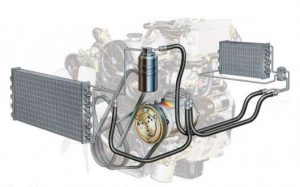 In the workshop, at the same time, ask to check the radiator for corrosion.
In the workshop, at the same time, ask to check the radiator for corrosion.
Flakes of rust can get into the engine, pump, or inside the radiator.
Corrosion also reduces the efficiency of the radiator – it begins to warm more, which can potentially lead to overheating.
If earlier you would have repaired the old radiator, today it is cheaper to buy a new one.
When the radiator problem is solved, you need to replace the rubber hoses of the radiator. The rubber dries, and you may not always notice cracks on the tube.
If the hose breaks on the road, you will have to stop immediately, as there is a risk of serious damage to the engine.
Old hoses are difficult to remove, so it makes sense to buy a special tool. A little silicone will help you attach new hoses more easily. Make sure the clamps are tight but not too tight.
14. Hoses and belts
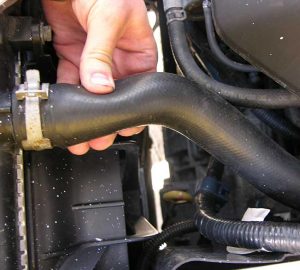 Compressor belts of the air conditioner, generator, supercharger, and water pump also need to be replaced.
Compressor belts of the air conditioner, generator, supercharger, and water pump also need to be replaced.
The most important (it needs to be replaced first) is the timing belt, which synchronizes the main actions of the engine.
Also, the rubber gaskets of the doors, hood, and trunk begin to crumble over time. Look at all this properly.
If the rubber looks dry but is in good condition, you can leave it as it is, and change when problems begin. In the meantime, it could wait.
The hoses are compressed by hand, and they should not be too hard. In this case, you need to look for cracks, especially near the connecting clamps.
When inspecting the timing belt, also look for cracks, wear, or lack of teeth. At the slightest signs of wear, it is better to replace it. The timing belt, as well as the alternator and fan drive belt, must be taut and not sag.
15. Brake system
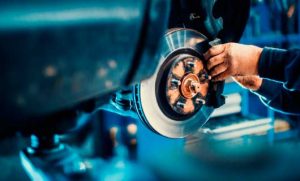 With the engine we are done, the next important task – check the brake system.
With the engine we are done, the next important task – check the brake system.
If the brake caliper is sticky, replace the piston.
The rusty surface of the brake discs is not such a big problem, because once you get behind the wheel and drive, the rust will fall off itself.
With the metal brake line, everything should be in order, but the rubber brake hoses will have to be replaced, and do it before you pour the brake fluid.
16. Liquids
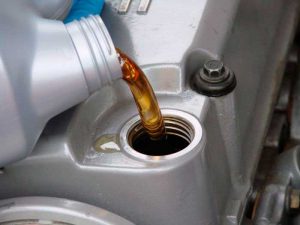 In a modern car, quite a lot of fluids are used, including engine oil, windshield washer fluid, brake fluid, transmission oil, thick lubricants in the chassis.
In a modern car, quite a lot of fluids are used, including engine oil, windshield washer fluid, brake fluid, transmission oil, thick lubricants in the chassis.
From time to time, it is necessary to check its level and quality (purity).
The quantity of engine and transmission oils is controlled by probes on which marks of the minimum and maximum levels are made.
To keep the car longer, it is worth getting into the habit of opening the hood and checking the oil level during each refueling with gasoline.
17. Engine oil
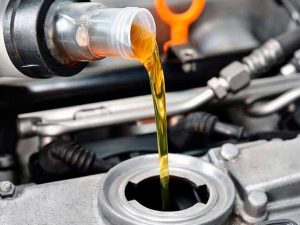 Pay special attention to engine oil.
Pay special attention to engine oil.
Get into the habit of regularly, in due time, to change the oil. This habit will allow the engine to work reliably and for a long time.
Today there is a vast selection of oils. Always carry a supply of oils with you. Make a hole in the crankcase of the engine on the roads can be quite easy, but if you have a stash, there is a chance to get to the nearest service station, village or even home.
The engine oil must be changed once a year or every 8,000 – 10,000 km (5,000 – 6,000 miles).
We want to note that it is better not to save on engine oil. As soon as you overcome the mark of 8,000 km (5,000 miles), lift the car with a floor jack and place the container under the oil pan.
Unscrew the drain bolt (the only bolt in the pan) and allow the old oil to drain into the set container. Then find the location of the oil filter and remove it.
Drip the oil on your finger and slide it around the perimeter of the sealing ring of the new filter, and then screw it into place. Screw the bolt back into the crankcase pan when all the oil has leaked out.
When the drain bolt and the new oil filter are already in place, fill the engine with the required amount of engine oil of the appropriate type.
Different engines have different requirements for the amount and type of oil. Refer to your vehicle’s owner’s manual or repair manual to find out which oil and in what volume you should use.
Related post: Best Oil For BMW
18. Transmission oil
Transmission oil or the so-called oil in the box is better to change according to the operating instructions of the specific car.
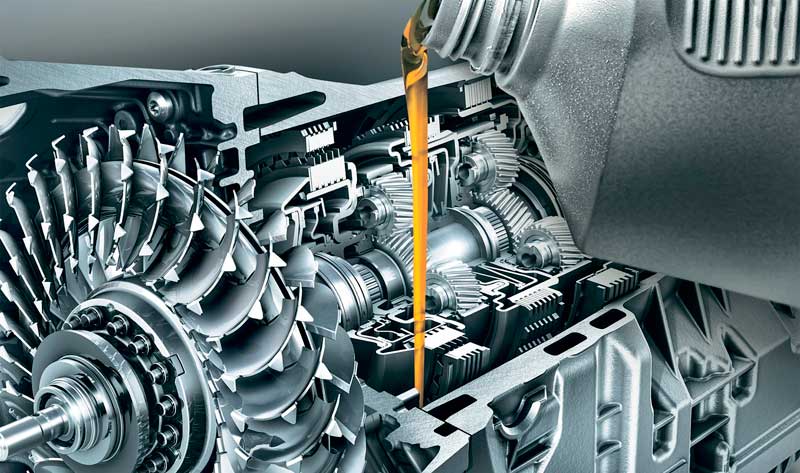
Some experts advise replacing the oil in the car with an automatic gearbox after 20-25 thousand miles.
19. Antifreeze
Replacement of antifreeze occurs one time in 4 years, however, forgetting about it, you can break the bank since the radiator costs a lot of money in any auto shop.
20. Hydraulic booster
Power steering is usually hydraulic and, like the automatic transmission, requires the use of oil for proper operation.
The hydraulic power steering system includes a small reservoir located in the engine compartment.
It is either made translucent, with marks by which you can judge the level, or has a cover equipped with a probe. The oil level is measured when the engine is switched off.
21. Brake fluid
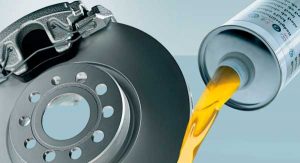 Brake fluid should be filled to the maximum level and continuously monitor the level.
Brake fluid should be filled to the maximum level and continuously monitor the level.
It is useful to inspect the arches of the wheels before the trip.
Most often, brake fluid “leaves” through damaged brake hoses. The following points will allow you to spot the leakage: in summer — oily spots, in the winter — frost of a yellowish or brownish color on the brake hoses and suspension parts.
22. Tires and Wheels
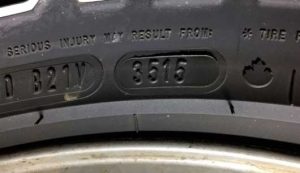 Older diagonal tires are more likely to have flat areas from prolonged lack of movement than modern tires, but most of all, you should be concerned about the wear and tear of the rubber.
Older diagonal tires are more likely to have flat areas from prolonged lack of movement than modern tires, but most of all, you should be concerned about the wear and tear of the rubber.
At the Motor Show in England in 2017, we were able to see a stunning original Triumph TR3 1959 issue with tires that were changed for only the second time in 1980.
Read also: Best 35 Inch All-Terrain Tires
You have to change tires six years after they are made, no matter how worn they look.
The side of the tire has a combination of numbers and letters. The last four digits are the week and year of production.
If you plan to park your car and not drive it for a long time, then wear covers on the tires to prevent damage to the rubber.
23. Pressure
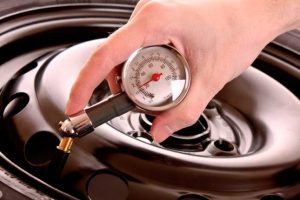 Tire pressure directly affects tire life, fuel economy, and safety.
Tire pressure directly affects tire life, fuel economy, and safety.
However, few drivers regularly check the air pressure in the wheels.
Some newer cars have built-in tire pressure sensors that display a message on the dashboard. For the rest, pressure testing should become standard procedure at every refueling or at least once a week.
The air pressure varies from model to model. You can learn it by the sign at the end of the door. On passenger cars, it is usually 2-2.5 atmospheres (bar).
24. Balancing
From time to time, check the wheels for imbalance and perform balancing.
Check wheel alignment every 50,000 km (30,000 miles) or as recommended by your vehicle manufacturer.
Also, be sure to check the wheel alignment after replacing the steering rack, suspension. Improper alignment of the wheels will reduce the service life of the rubber, as well as lead to poor handling of the car. If the steering of the vehicle has become more rigid or the vehicle pulls to the side, most likely, you have a problem with the wheel alignment.
25. The depth of the rubber
Upon inspection of the “rubber,” first we need to determine the depth of the tread grooves.
For summer tires, this value should be greater than 1.6 mm, and for winter – at least 4 mm.
If the tires are worn more, then they can not be used, as it is very dangerous. On wet road car on the “bald” tires brakes much worse.
26. Tires swapping
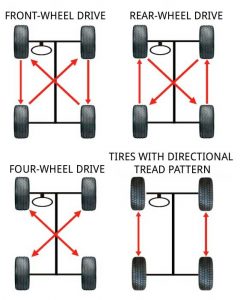 To extend the service life of the vehicle wheels and to ensure more uniform wear of the tires, they are swapped.
To extend the service life of the vehicle wheels and to ensure more uniform wear of the tires, they are swapped.
Every 6,000 miles (or when changing the oil), the wheels are rearranged according to a particular pattern: the rear are put forward, and the front – back, also changing the left and right.
At the same time also look at the general condition of the tires, checking for the absence of scuffs and bumps.
Read also: Best 20 Inch Tires For Dodge RAM 1500
27. Air Conditioning
Another point to pay attention to is the care of the air conditioner inside the cabin.
In cars that are not equipped with a cabin filter, dirt, dust, and sand fall first into the air conditioning system, and then into the cabin.
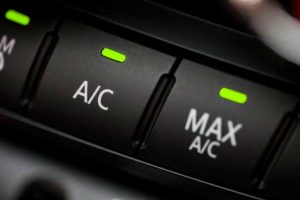 To avoid contamination of the system and musty smell, it is necessary to periodically clean and purge it.
To avoid contamination of the system and musty smell, it is necessary to periodically clean and purge it.
The refrigerant inside the system is a liquid. However, it exits the system as a gas.
Even if your air conditioner is in perfect condition, the leak will still be at least 7 ml per year.
Over time, you may notice that your air conditioner is not blowing cold air. Take your car to the service station for a/c recharging, everything will be corrected, and the refrigerant will no longer leak into the air.
Related post: Best Car A/C Recharge Kit
If your vehicle was produced before 1994, the air conditioner might contain freon R12. Consider switching from R12 to R134a. If the air conditioner runs low on refrigerant, it will only mess it up.
28. Exhaust system
Be wary of smelling the exhaust or of changing the exhaust sound.
All this may indicate overheating of the exhaust system or violation of its tightness. And when air is sucked into the exhaust system, the engine rpm speed can strongly “swing.”
29. Computer diagnostics

Computer diagnostic is needed at least once a year.
This is an excellent prevention of malfunctions, which is much cheaper than the subsequent repair due to failure, which is not detected on time.
Do not forget that the effectiveness of computer diagnostics depends on the level of qualification of the performer.
30. Air filter
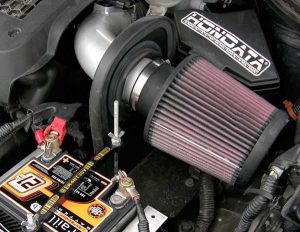 Change the air filter every year.
Change the air filter every year.
The air filter prevents sand and other debris from entering the engine from the outside.
In most cases, these filters need to be replaced annually, although some filters could be cleaned rather than replaced.
Locate the air filter housing at the end of the air intake pipe leading to the top of the engine. Unfasten 2-4 latches holding it and open the top cover to access the air filter directly.
The filter is located directly inside the housing. Remove it with your hands and install a new one in the same place. Close the filter housing and fasten the latches.
31. Cabin filter
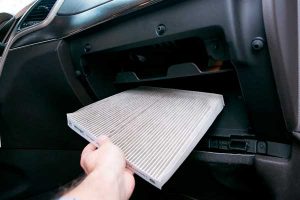 Together with the replacement of the air filter under the hood will not be superfluous to examine the cabin filter.
Together with the replacement of the air filter under the hood will not be superfluous to examine the cabin filter.
It is located behind the glove box (glove compartment) and does not affect the operation of the units of the car, but can become a source of allergy for passengers.
Since pollen, dust, mold, and mildew can be found here, there is only one way for him – to go to the trash.
32. Fuel filter
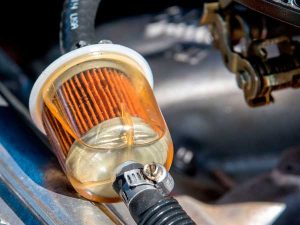 Replace the fuel filter every 15,000 — 25,000 miles (depending on fuel quality).
Replace the fuel filter every 15,000 — 25,000 miles (depending on fuel quality).
The fuel filter blocks the flow of contaminants and gasoline sediment into the engine.
To replace the filter, locate it on the fuel line running from the fuel tank to the front of the car. It looks like a cylinder with pipes at both ends.
Place the container at the bottom to catch the leaking fuel, and use a flat screwdriver to unfasten the latches that hold the fuel line tubes on the nozzles.
Loosen the bracket holding the filter and remove it. Insert the new fuel filter into place and secure it. Attach the fuel tubes to the nozzles and fasten the latches to secure them. If the locks break, you can buy new ones in the auto shop.
33. Battery
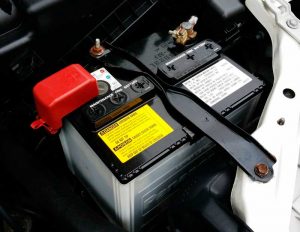 Many drivers are wary of touching the wiring in the car, as they have heard about the danger of electric shock. In fact, you can safely touch the battery. Besides, it should be inspected at least once a year.
Many drivers are wary of touching the wiring in the car, as they have heard about the danger of electric shock. In fact, you can safely touch the battery. Besides, it should be inspected at least once a year.
If you can charge the battery and it will work, leave it. But over time, the batteries are completely discharged, and this affects their shelf life and power. So get ready to buy a new battery, if not now, then in the near future.
Clean all the terminals of the battery, cable ends, and ground to the body with a plastic brush or a brush with copper bristles by using a special cleaner for the battery. Consider buying a special protective agent for the battery terminals so that they do not oxidize.
Read also: Best Car Battery Maintainer
34. Radiator
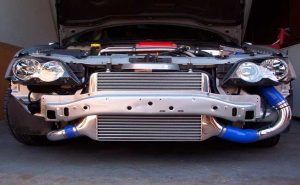 Monitor the condition of the cooling radiator to increase its service life.
Monitor the condition of the cooling radiator to increase its service life.
Check the radiator for leaks. If the radiator gave a slight leak, try to repair it with a special sealant, which is available commercially in the form of powder or liquid.
Clean the radiator with a special cleaner as it becomes dirty. Spray the cleaner directly on the radiator and leave to affect for a few minutes.
Do not touch or rub the radiator. Because of your touch, the plates can bend, or you can get injured by them, as they are quite sharp. Instead, give the cleaner a couple of minutes to take effect and then rinse it off with water from the hose.
35. Spark plugs
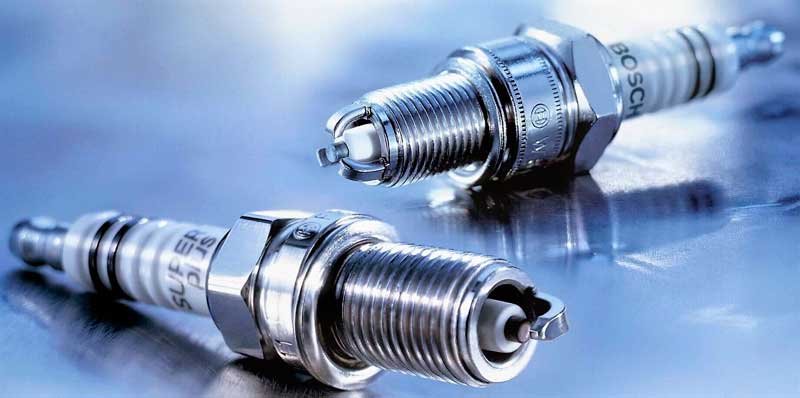
The first symptom of the need to replace the spark plugs is instability in the engine operation.
It is necessary to change them at least one time per 30,000 miles (50,000 km), however, besides, to consider operating conditions.
If you neglect this factor, the spark plug will “merge” with the cylinder head, and such repairs will require serious financial investments.
36. Windshield wipers
For some reason, many drivers neglect to replace the wiper blades, thereby causing damage to the car.

The main part of the “wipers” is made of rubber, which under the influence of the sun and water quickly becomes unusable.
Such a brush poorly cleans the glass but scratches it. Therefore, it is much easier once or twice a year to install new “wipers.”
37. Light indicators
Keep an eye on the indicator lights on the dashboard (especially red and yellow).
They usually signal problems and malfunctions – many of which can end up very unpleasant.
So be careful and do not forget to put the operating instructions in the glove box, and upon detection of the above signals – do not be lazy to read in the instructions what they mean and recommendations for further action.
38. Indicator values
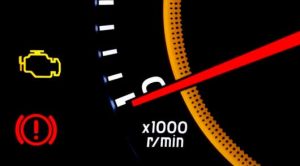 On the dashboard of any car, there are warning icons that inform the driver about the work of some mechanisms, as well as about malfunctions. These icons help you always to be aware of what is happening with your car.
On the dashboard of any car, there are warning icons that inform the driver about the work of some mechanisms, as well as about malfunctions. These icons help you always to be aware of what is happening with your car.
- Red. As a rule, red informs about a serious problem or some unresolved security issue. Also, red is used to indicate important reminders.
- Yellow (orange). Usually, yellow or orange icons inform that a particular part of the car needs repair or maintenance. However, if the icon of this color starts flashing, you should contact the workshop as soon as possible.
- Green or blue. Icons of this color are used exclusively to give the driver additional information about the stable operation of the system.
Tips:
- After one red or yellow indicator lights up, do not wait for others to light up, as the more you postpone a visit to the workshop, the higher the risk of even more severe damage to the car, which can, in turn, lead to very unpleasant consequences.
- Try to carry out regular technical inspection, which will help to avoid unexpected malfunctions. Always pay attention to the dashboard icons, and you will be aware of the work of all systems of the car.
39. Shock absorbers
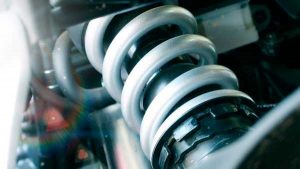 Check the serviceability of shock absorbers.
Check the serviceability of shock absorbers.
To do this, swing the body at the attachment point of each of them.
In this case, the body must make only one move.
If the body oscillates several times, the appropriate shock absorber or strut should be replaced.
Read also: Best Shock Absorbers For Ford F150
40. Storage and operation
Not only care for the car, but also proper storage – the key to long-term operation of the vehicle.
The optimal solution is to store the automobile in a garage where a comfortable temperature is maintained.
Related post: Best Car Lift For Home Garage
The room should be:
- dry;
- blackout;
- with good air circulation.
The air temperature should be at least -5°C. This will allow leaving the batterie, radio in the car.
Before long-term storage, it is necessary to develop oil in the engine, the engine itself is recommended to cover with a film, paper treated with oil, or a piece of cloth.
Wiring is cleaned, wiped, and the car is placed on the stand so that the wheels do not touch the ground, the floor.
Be sure to reduce the tire pressure to 0.5 kgf/cm2.
41. Covering
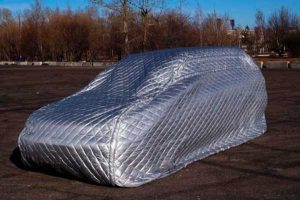 If the four-wheeled friend is continuously in the sun, then it must be covered with a special material (cover) that holds the sun’s rays.
If the four-wheeled friend is continuously in the sun, then it must be covered with a special material (cover) that holds the sun’s rays.
Otherwise, fading of body paint, interior panels, upholstery of car seats, or stains on the body may occur.
When wintering the vehicle on the street, it is required to “dress” in a special cover. You need to place several soft (felt, flannel, foam) gaskets between the cover and the body to prevent enamel damage. Their thickness must be at least 1.5-2 cm.
42. Driving
As for the operation, remember, the car requires you to drive carefully.
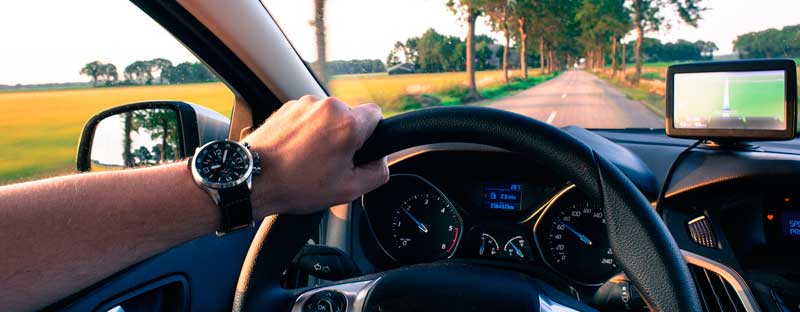
Try in every possible way to go around even small pits, but do not bring this matter to fanaticism, as there are cases when the desire to go around the pit leads to a serious accident. If you see that you can not go around the road roughness, then try to slow down as much as possible, and smoothly drive through it.
If you do not release the brake pedal – a very strong blow will fall on wheels (iron will bend, titanium can even crack), and pressed gas pedal can knock the steering wheel out of your hands, thereby provoking running to another lane. Be careful on the road.
43. Carry your tools
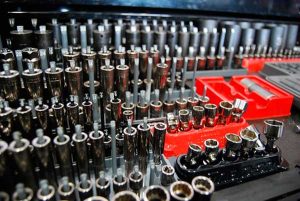 Every driver should have in his car a certain set of simple tools and items that can be useful in certain circumstances.
Every driver should have in his car a certain set of simple tools and items that can be useful in certain circumstances.
Even if you do not understand the device of the car, still a set of car tools can help in case of emergencies. These tools and items can be useful to you on the road, in the parking lot, and wherever you drive your car.
By having this set of simple tools, you can ease yourself of the difficulties that may suddenly arise while operating the vehicle.
Whether it’s replacing the spark plugs, checking the battery, or replacing the flat wheel, in any case, you must have at least a minimum set of car tools.
44. Refuel with quality fuel
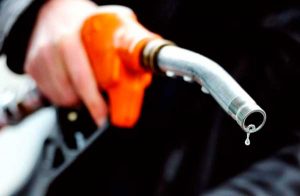 Use gasoline with the correct octane number. The octane number reflects the stability of the fuel under pressure.
Use gasoline with the correct octane number. The octane number reflects the stability of the fuel under pressure.
High-pressure or supercharged (turbocharged) engines require fuel with a higher octane number than the engines of most other cars.
Using gasoline with too low octane number can damage the engine and cause serious problems in the future.
Most cars that require “premium” quality fuel have this information on the dashboard and the fuel tank cover.
If you are not sure what octane number of fuel your vehicle requires, refer to the owner’s manual or the manufacturer’s website.
45. Watch your fuel consumption
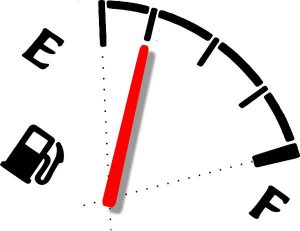 If the fuel consumption (overspending) of the car on the same route, with the same driving style by the same driver, became 50-100% more than usual (twice as much), then it is time to start looking for the reason why your car began to consume too much fuel.
If the fuel consumption (overspending) of the car on the same route, with the same driving style by the same driver, became 50-100% more than usual (twice as much), then it is time to start looking for the reason why your car began to consume too much fuel.
As a rule, all components of the engine and the attachments of the vehicle are directly responsible for its fuel consumption, since they exert a certain load on the motor.
Any shaft, roller, or belt (etc.) should have free movement and not load the engine during its operation. Otherwise, at rotation and even small resistance, you will observe the increased fuel consumption by the car.
Malfunction and improper operation of the auxiliary equipment that is installed under the hood of the vehicle can lead to an increase in fuel consumption. For example, fuel consumption can significantly increase in the case of the air conditioner compressor malfunctions.
First, – it is necessary to check the pressure in all tires of the car. The fact that the most common cause of fuel overruns is the wrong tire pressure. For example, with insufficient tire pressure, fuel consumption can rise to almost 30%.
The electronic engine management system can also be one of the main reasons for the increased fuel consumption. If you suddenly began to notice that your car began to consume too much gasoline or diesel fuel, then do not be lazy, and be sure to conduct an electronic diagnosis of the car.
46. Use a window washer
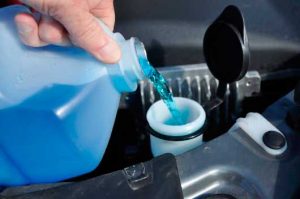 Do not add water to the windshield washer tank.
Do not add water to the windshield washer tank.
First, conventional water will cause deposits to form in the washer systems.
Secondly, the water with a sharp change in temperature from plus to minus can freeze, damaging the washer system (unfortunately, not everyone manages to change the water to antifreeze timely).
Also, do not start the glasswasher if there is no liquid in the tank. So you can damage the pump in the wiper tank.
We advise you to use distilled water instead of conventional water in summer. And with the arrival of autumn, start to fill with antifreeze.
47. Interior care
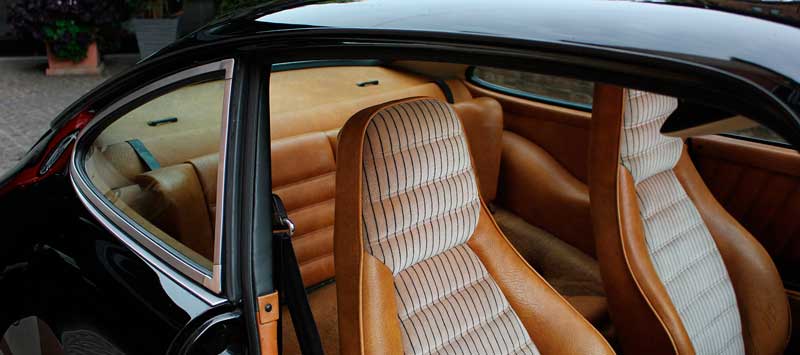
Keep the cabin clean. The interior of the car must be continuously cleaned in the process of the emergence of dust and contamination of fabric surfaces.
If you or your passengers smoke, then the dry cleaning of the cabin is needed once a month; if not, and you do not carry animals with you, then send the car to the dry cleaning every 3-4 months.
Caring for the interior of the car requires a responsible attitude. The process may seem simple, but it’s not. Cleaning agents should be selected based on the specifics of materials (synthetic, natural, or artificial).
48. Cleaning the interior
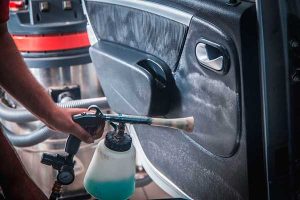 Seats are cleaned with a vacuum cleaner, greasy, oil stains – with the use of a stain remover.
Seats are cleaned with a vacuum cleaner, greasy, oil stains – with the use of a stain remover.
The ceiling is washed with the use of special agents and without a vacuum cleaner, which can damage the ceiling, and it will have to be pulled over. If the covers are heavily soiled, dry cleaning of the car interior will help.
The upholstery wears out the most in the cabin. Carefully monitor the condition of the covers, vacuum regularly, change if necessary. The best material for covers is synthetic. Natural fabrics, of course, are nicer, but they will wear out much faster.
If you have a leather interior, it requires special care. Cleaning is carried out using means containing silicone or wax. Only after complete drying, apply skin care products.
Owners of light interiors should know that stains should be removed using special agents or soap solution, which will need to be thoroughly washed off. Try not to wet the foam; otherwise, the seat will dry for a long time.
If you are using a product for the first time, first test it on an inconspicuous area of upholstery.
49. Protection of the interior from the sun
 In summer, do not forget about the passenger compartment, which does not like direct sunlight and high temperature.
In summer, do not forget about the passenger compartment, which does not like direct sunlight and high temperature.
If you leave the car in the parking lot for a long time (from several hours and longer), do not be lazy to put a reflective film under the glass.
On the one hand, it will close the interior from direct sunlight, which will save the plastic of the car dashboard and seat trim materials from overheating and cracking.
And, on the other hand, – will reduce at least by a couple of degrees the temperature inside the car.
50. Cleaning of mats
Keep the mats clean.
They accumulate the most dirt and dust, which then spread through the cabin. Shake and wipe them regularly.
Do not use mats with a fabric surface, they are more aesthetic, but over time will provoke allergies, because dirt accumulates in the fabric, dust mites can start.
51. Seasonal car maintenance
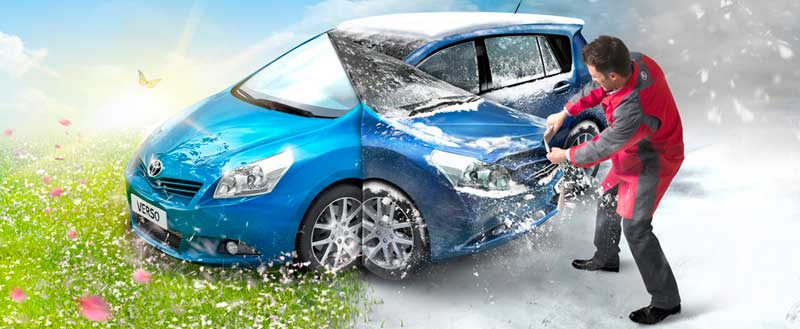
It is also necessary to take into account the fact that the season for motorists is divided into two parts: summer and winter.
First of all, this applies to the replacement of tires, which is also separated by season: summer and winter (studded).
As the temperature decreases, the glasswasher tank must be filled with the appropriate liquid for the season. This is done to ensure that the liquid in the washer does not freeze and does not corrupt the tank, and also, falling on the glass, does not freeze on it in frosty weather.
Winter is a difficult period for the motorist and his car.
First of all, in winter, it is necessary to check the battery level regularly. Periodically clean the fenders from the accumulated snow and frost, as well as clean from this and the body itself.
Sometimes drive a four-wheeled friend to the car wash in the winter; this will not only make it clean but also clean it from the same frost and snow.
Winter washing is also useful in that you will wash away from the car various anti-icing reagents that harm the body and contribute to the formation of corrosion.
Of course, in the winter, it is very desirable to rent a garage to reduce the impact of winter factors on the car.
Summer car care does not require special approaches to operation. At the same time, the technical support service of the vehicle is best to make at this time of the year, especially checking the chassis.
52. Car maintenance schedule (Checklist)
Check monthly
- Check engine light (is it on?)
- Cleaning interior and exterior
- Lights
- Tire inflation, tread, and general condition
- Windshield washer fluid
Check every 3 months/3,000 miles
- Automatic transmission fluid
- Battery and cables
- Belts
- Check engine light (is it on?)
- Engine oil and filter
- Exhaust
- Fuel filter
- Hoses
- Lights
- Power steering fluid
- Tire inflation, tread, and general condition
- Windshield washer fluid
Check every 6 months/6,000 miles
- Automatic transmission fluid
- Battery and cables
- Belts
- Chassis lubrication
- Check engine light (is it on?)
- Polish
- Engine air filter
- Engine oil and filter
- Exhaust
- Fuel filter
- Hoses
- Lights
- Power steering fluid
- Tire inflation, tread, and general condition
- Windshield washer fluid
- Wiper blades
Check every 9 months/9,000 miles
- Automatic transmission fluid
- Battery and cables
- Belts
- Check engine light (is it on?)
- Engine air filter
- Engine oil and filter
- Exhaust
- Fuel Filter
- Hoses
- Lights
- Power steering fluid
- Tire inflation, tread, and general condition
- Windshield washer fluid
Check every 12 months/12,000 miles
- Automatic transmission fluid
- Battery and cables
- Belts
- Brakes
- Cabin air filter
- Check engine light (is it on?)
- Polish
- Coolant (Antifreeze)
- Engine air filter
- Engine oil and filter
- Exhaust
- Fuel filter
- Hoses
- Lights
- Power steering fluid
- Steering and suspension
- Tire inflation, tread, and general condition
- Windshield washer fluid
- Wiper blades
Sources:
- Here’s Your Basic Car Maintenance Schedule – Advance Auto Parts
- 5 Things to Do to Make Your New Car Last – AARP
- 5 Maintenance Tips For Keeping Your Car In Shape – HuffPost
